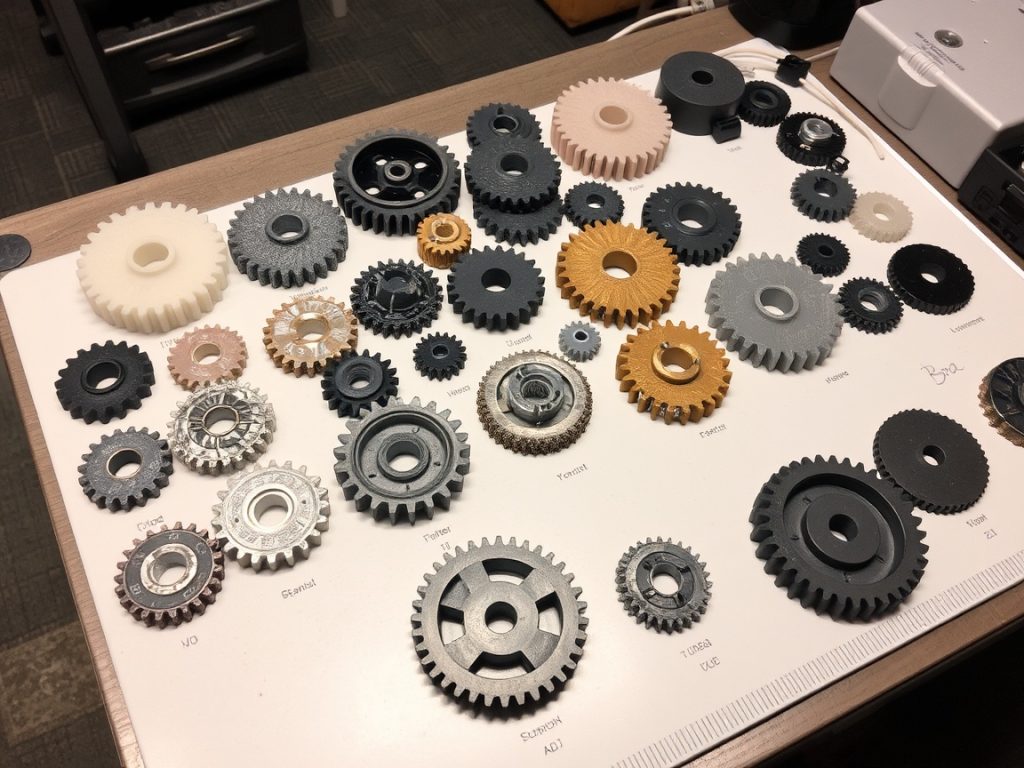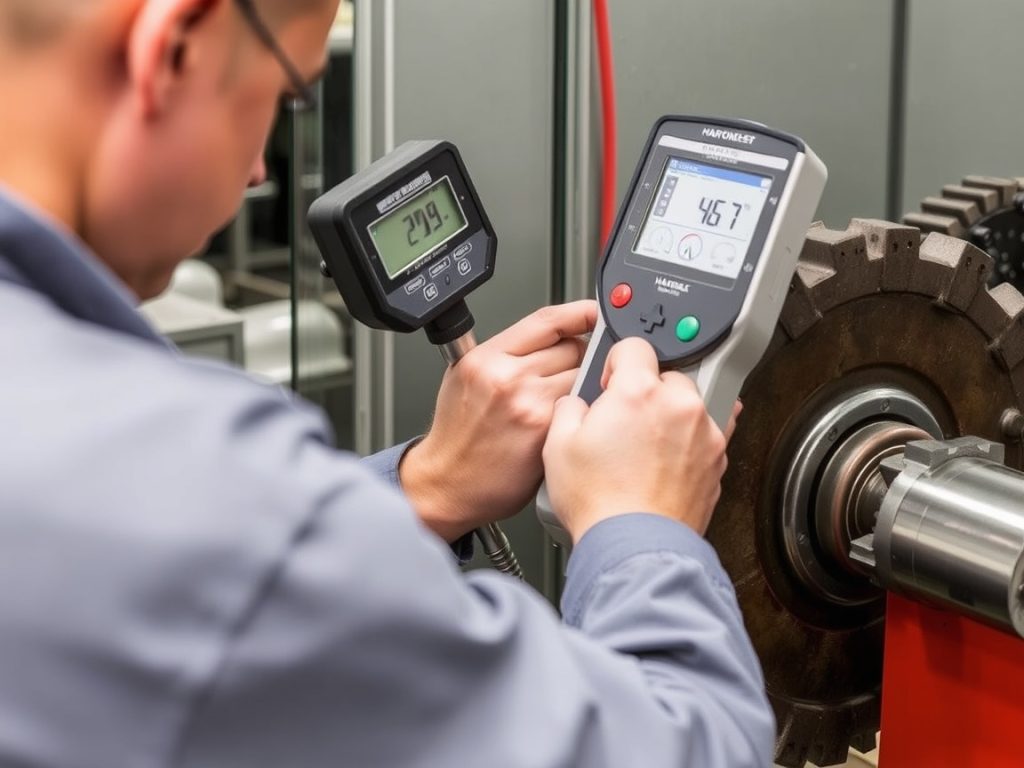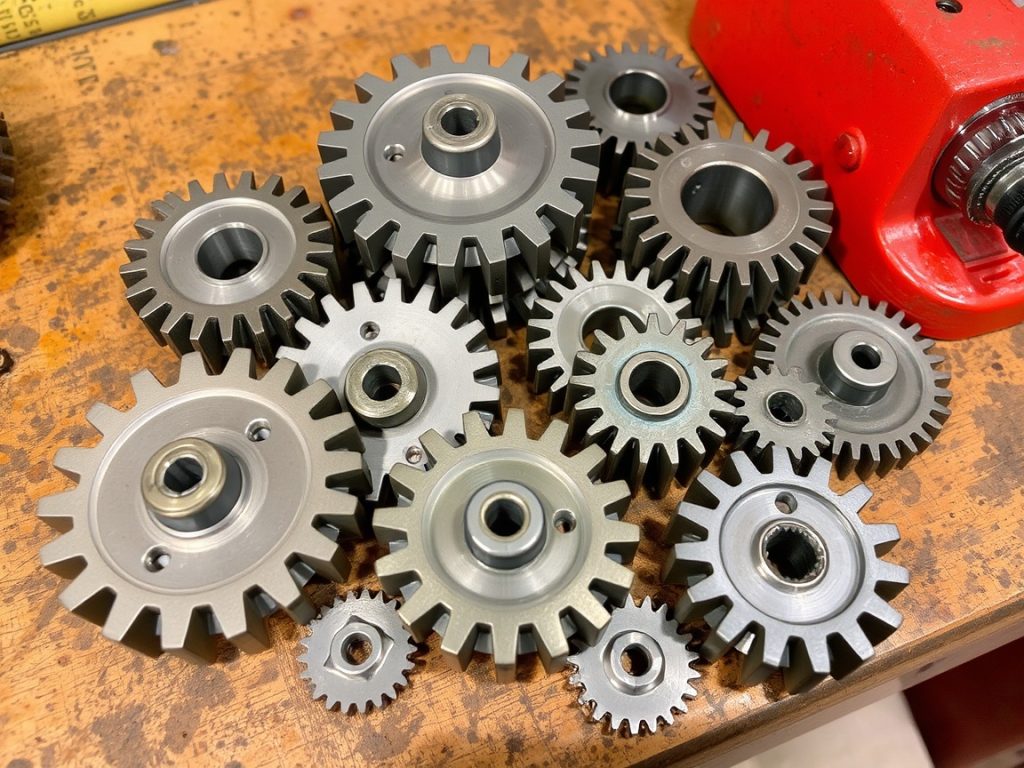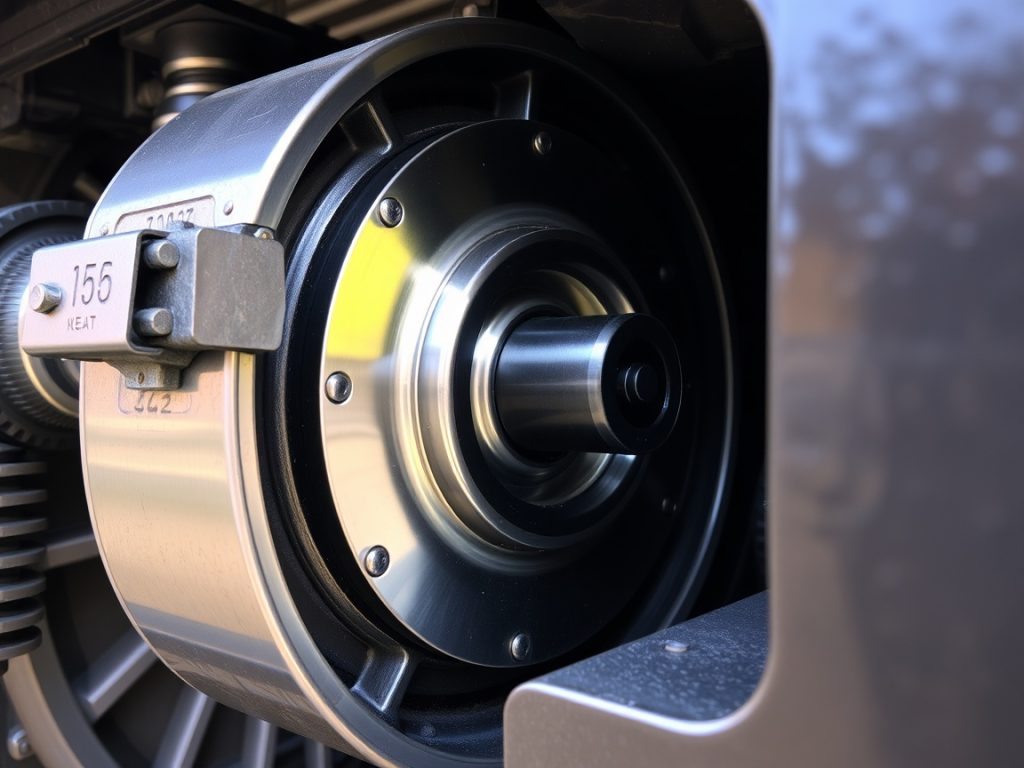Locomotive gear hardness is a critical factor in ensuring the efficient and safe operation of railway systems. Different standards, such as ASTM, AGMA, and ISO, provide guidelines for hardness testing to maintain quality control. Understanding these standards and their implications is essential for engineers and manufacturers in the locomotive industry. This article provides a detailed overview of hardness testing for locomotive gears, focusing on the importance, methods, and specific standards involved, along with expert insights from Mikura International, a leading exporter of locomotive and marine engine parts.
Understanding Locomotives Gear Hardness

The hardness of locomotive gears directly influences their ability to withstand the demanding conditions they face. Gears must resist wear, shock loading, and the constant vibration experienced during operation. A proper design that considers material hardness and the use of tungsten is crucial for extending the lifespan and enhancing the reliability of these critical components. Hardness testing ensures that the materials used meet the required mechanical properties, guaranteeing durability and minimizing the risk of premature failure.
The Importance of Hardness in Locomotive Gears
Hardness is a primary factor determining the lifespan and performance of locomotive gears. Gears that are not sufficiently hardened are susceptible to rapid degradation due to wear and tear, especially when exposed to sulfur compounds. This can lead to decreased efficiency, increased maintenance costs, and potentially catastrophic failures. Ensuring the correct hardness values through rigorous hardness testing is essential for maintaining the reliability and safety of the entire locomotive system, as well as resisting wear and contributing to the coefficient of friction.
Common Hardness Testing Methods
To assess the mechanical properties of locomotive gears, various hardness testing methods are employed. These methods include:
- Rockwell hardness test
- Vickers hardness test
- Brinell hardness test
Each test possesses its own advantages and applications. The selection of an appropriate testing method depends on the material being tested, the desired accuracy, and the specific requirements of the design. Understanding the principles behind each method is crucial for interpreting the results and ensuring quality control.
Overview of Rockwell Hardness Test
The Rockwell hardness test is a commonly used method for indentation hardness for determining the hardness of various metals and alloys. The method involves pressing an indenter into the material being tested with a minor load, followed by a major load. The depth of the indentation is measured, and the hardness number is determined based on the difference in indentation depth between the minor and major loads.
Different scales, such as HRC, are used depending on the material and the indenter, which can be a diamond indenter for harder materials like tool steels or a carbide ball for softer materials such as copper or aluminum alloys. The test is relatively simple, quick, and suitable for a wide range of materials, making it a popular choice in quality control processes. This method for indentation hardness and measurement is favored because of its accuracy in the ratio of hardness values.
Standards Overview

Understanding the array of standards governing gear hardness is paramount for ensuring locomotive component reliability. Several standards provide unique guidelines, including:
- ASTM, which focuses on material specifications and testing methods.
- AGMA, which provides gear-specific standards.
- ISO, which offers a global perspective, harmonizing international practices.
These standards are essential for maintaining quality control and ensuring that locomotive gears meet stringent performance requirements to resist wear.
ASTM Standards for Hardness Testing
ASTM standards are commonly used for defining hardness testing methods for a wide variety of metals, including steel and aluminum. These standards specify how to perform the Rockwell hardness test, including parameters such as the indenter type, load application, and scale selection. ASTM standards ensure that the testing procedure is consistent and accurate, providing hardness values which can be compared across different laboratories. For instance, ASTM E18 details the Rockwell hardness test for metallic materials and includes procedures to calculate the hardness number accurately.
AGMA Guidelines and Their Implications
AGMA (American Gear Manufacturers Association) guidelines provide specific recommendations for gear design, manufacturing, and hardness requirements. These guidelines are essential for ensuring the durability and reliability of locomotive gears. AGMA standards often include detailed specifications for material selection, heat treatment processes, and hardness testing to withstand shock loading and vibration. Adhering to AGMA guidelines helps minimize degradation and extend the lifespan of critical gear components, ensuring optimal performance and safety through rigorous gauge testing.
ISO Standards: A Global Perspective
ISO standards offer a globally recognized framework for hardness testing and material specifications, providing a comprehensive approach to ensure quality control and reliability of locomotive gears. These standards harmonize testing methods and hardness values across different regions, facilitating international trade and collaboration. For instance, ISO 6508 specifies the Rockwell hardness test for metals, aligning with ASTM standards but offering a broader scope for global applications. Adhering to ISO standards helps ensure that locomotive gears meet international benchmarks.
Comparison of Testing Methods

Comparing different testing methods for gear hardness is crucial for selecting the most suitable approach. Several techniques are available, each with specific characteristics:
- The Rockwell hardness test, Vickers hardness test, and Brinell hardness testing each offer unique advantages in terms of accuracy and speed.
- Applicability to different materials is also a key differentiator.
The choice depends on the material being tested, the desired level of accuracy, and specific requirements, considering that a diamond indenter is often used for steel and a carbide ball for aluminum. Mikura International advises careful consideration of these factors.
Accuracy and Reliability of Different Standards
The accuracy and reliability of hardness testing methods significantly impact the assessment of gear performance. The Rockwell hardness test is commonly used for its speed and ease of use, while Vickers offers higher accuracy for thin or surface-hardened materials. Brinell is suitable for larger, coarse-grained metals. Each method yields different hardness values and requires proper calibration. Understanding these nuances is vital for ensuring that the design meets specified mechanical requirements and that lifespan is ensured. Mikura International prioritizes accurate and reliable standards.
Practical Applications in Locomotive Industry
In the locomotive industry, hardness testing is essential for ensuring the durability and reliability of gears under demanding conditions. The Rockwell hardness test is commonly used for quick checks on steel components, while Vickers may be employed for more precise measurements. Understanding the practical implications of hardness values helps engineers select appropriate materials and heat treatment processes. This hardness testing guarantees optimal performance, reduces the risk of premature degradation, and enhances safety by minimizing vibration and shock loading.
Choosing the Right Standard for Your Needs
Selecting the appropriate hardness testing standard requires considering factors such as the material being tested, the desired accuracy, and the specific application. ASTM standards are commonly used in North America, while ISO standards provide a global perspective. AGMA guidelines offer gear-specific requirements to resist wear. Evaluating these factors ensures that the chosen standard aligns with your project’s goals, guarantees quality control and enhances the durability and reliability of locomotive gears for optimal performance.
Best Practices for Hardness Testing

Tips for Accurate Hardness Testing
To achieve accurate hardness testing, several practices should be followed meticulously. First, the surface of the material being tested must be clean and smooth, free from any contaminants or surface imperfections, as these can interfere with the indenter and affect the hardness values. Accuracy can be significantly improved by ensuring the testing machine is properly calibrated and maintained, using the correct indenter and load for the material, and carefully interpreting the results based on the testing methods.
Common Pitfalls to Avoid
Several pitfalls can compromise the accuracy and reliability of hardness testing results. One frequent error is failing to properly prepare the surface of the metal, which can introduce irregularities that affect the indenter’s penetration. Another common mistake is using an inappropriate load or indenter for the material, leading to inaccurate hardness values. Additionally, overlooking environmental factors such as vibration or temperature variations can introduce errors. Ensuring thorough quality control prevents these issues and ensures correct data.
Expert Insights on Improving Testing Processes
Experts emphasize the importance of regular calibration and maintenance of testing equipment to maintain accuracy. They also recommend using multiple testing methods to cross-validate results, especially for critical applications. Furthermore, proper training of personnel is crucial to minimize errors. Mikura International suggests investing in advanced testing equipment with automated features can improve speed and reduce human error, enhancing overall testing process accuracy. Properly evaluating the hardness values is a primary factor in determining the integrity of the gear.
Conclusion and Future Trends

Summary of Key Points
In summary, adhering to ASTM, AGMA, and ISO standards is crucial for ensuring the reliability and durability of locomotive gears. Proper selection of testing methods, such as the Rockwell hardness test, along with meticulous attention to surface preparation and equipment calibration, helps to achieve accurate hardness values. Understanding these standards and best practices are essential for engineers and manufacturers. Mikura International stands ready to assist with high-quality gear components and expert guidance.
Future Developments in Gear Hardness Testing
The future of gear hardness testing is poised for advancements with the integration of non-destructive testing methods such as ultrasonic and eddy current techniques, enhancing accuracy and efficiency. These innovations enable in-situ testing without damaging the material, facilitating real-time monitoring of gear performance. Moreover, the utilization of advanced data analytics and machine learning algorithms can predict gear lifespan and prevent premature failures, ensuring optimal performance.
Final Thoughts on Standard Compliance
Adhering to stringent standards such as ASTM, AGMA, and ISO is paramount for guaranteeing the reliability and safety of locomotive gears, preventing degradation. Compliance with these standards not only enhances the durability of gears but also ensures regulatory adherence, fostering trust among stakeholders. By prioritizing standard compliance, the locomotive industry can maintain high levels of performance, minimizing risks and ensuring operational excellence, particularly through the Rockwell hardness test testing methods to validate the hardness of the material.
Q: What are the key differences between ASTM, AGMA, and ISO standards for locomotive gear hardness testing?
A: ASTM, AGMA, and ISO standards provide guidelines for hardness testing but differ in their specific methodologies and requirements. ASTM focuses on material properties and testing methods in a broader context, AGMA specializes in gear-related standards, and ISO offers international consistency across various industries. Each standard may use different instruments and testing procedures, especially when considering factors like plastic deformation and brittleness.
Q: How does the hardness testing procedure impact the performance of locomotive shafts?
A: The hardness testing procedure is crucial for assessing the durability and performance of locomotive shafts. By evaluating hardness, manufacturers can identify the material’s resistance to deformation, which is influenced by the testing standards applied. For instance, a shaft that meets the hardness criteria set by ASTM or AGMA is likely to perform better under stress and has a lower chance of becoming brittle or failing during operation.
Q: What testing instruments are commonly used for measuring hardness according to these standards?
A: Common hardness testing instruments include Rockwell, Brinell, and Vickers testers, with some using specialized methods like laser or magnetic hardness testing for specific applications. The choice of instrument may depend on the material being tested, such as tungsten carbide or polymer, and the type of hardness measurement required.
Q: How does moisture content affect the hardness of locomotive gears?
A: Moisture content can significantly influence the hardness of locomotive gears, particularly those made from polymer materials. Excess moisture can lead to swelling or softening, resulting in lower hardness levels. It’s important to control moisture during the manufacturing and testing processes to ensure accurate hardness measurements.
Q: Are there lightweight options available for testing gear hardness in locomotives?
A: Yes, there are portable and lightweight hardness testing options available that allow for easy on-site testing of locomotive gears. These portable instruments can provide accurate readings without the need for heavy equipment, making them suitable for various testing environments.
Q: What role does nitrogen play in the hardness testing of locomotive gears?
A: Nitrogen is often used in heat treatment processes to enhance the hardness of locomotive gears. By controlling the nitrogen atmosphere during hardening, manufacturers can achieve specific hardness levels and improve the overall mechanical properties of the gears, ensuring they meet the required standards.
Q: Can hardness testing reveal information about the brittleness of locomotive components?
A: Yes, hardness testing can provide insights into the brittleness of locomotive components. A high hardness value may indicate a material is more brittle, while lower values may suggest better ductility. Understanding this relationship helps engineers design components that balance strength and toughness.
Q: What are the implications of using different hardness testing standards for the same gear?
A: Using different hardness testing standards for the same gear can lead to discrepancies in results, as each standard may have different criteria and methodologies. This can affect the perceived quality and performance of the gear. Therefore, it’s essential to use a consistent standard throughout the manufacturing and testing process to ensure reliability and compliance.


